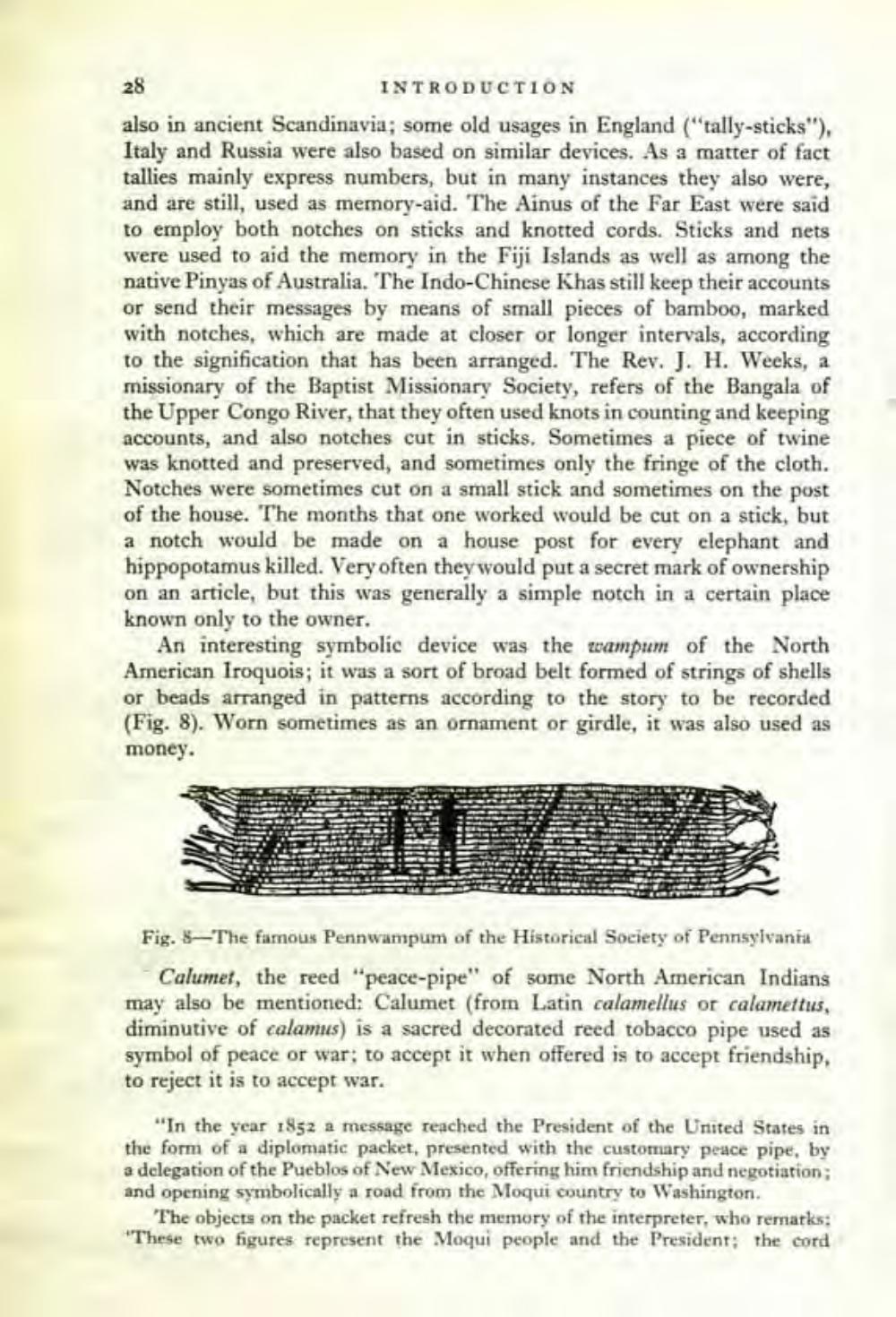________________
28
INTRODUCTION also in ancient Scandinavia; some old usages in England ("tally-sticks"), Italy and Russia were also based on similar devices. As a matter of fact tallies mainly express numbers, but in many instances they also were and are still, used as memory-aid. The Ainus of the Far East were said to employ both notches on sticks and knotted cords. Sticks and nets were used to aid the memory in the Fiji Islands as well as among the native Pinyas of Australia. The Indo-Chinese Khas still keep their accounts or send their messages by means of small pieces of bamboo, marked with notches, which are made at closer or longer intervals, according to the signification that has been arranged. The Rev. J. H. Weeks, a missionary of the Baptist Missionary Society, refers of the Bangala of the Upper Congo River, that they often used knots in counting and keeping accounts, and also notches cut in sticks. Sometimes a piece of twine was knotted and preserved, and sometimes only the fringe of the cloth. Notches were sometimes cut on a small stick and sometimes on the post of the house. The months that one worked would be cut on a stick, but a notch would be made on a house post for every elephant and hippopotamus killed. Very often they would put a secret mark of ownership on an article, but this was generally a simple notch in a certain place known only to the owner.
An interesting symbolic device was the wampum of the North American Iroquois; it was a sort of broad belt formed of strings of shells or beads arranged in patterns according to the story to be recorded (Fig. 8). Worn sometimes as an ornament or girdle, it was also used as money.
Fig. 8-The famous Pennwampum of the Historical Society of Pennsylvania
Calumet, the reed "peace-pipe" of some North American Indians may also be mentioned: Calumet (from Latin calamellus or calamettus, diminutive of calamus) is a sacred decorated reed tobacco pipe used as symbol of peace or war; to accept it when offered is to accept friendship. to reject it is to accept war.
"In the year 1852 a message reached the President of the United States in the form of a diplomatic packet, presented with the customary peace pipe, by a delegation of the Pueblos of New Mexico, offering him friendship and negotiation; and opening symbolically a road from the Moqui country to Washington,
The objects on the packet refresh the memory of the interpreter, who remarks: *These two figures represent the Moqui people and the President; the cord




